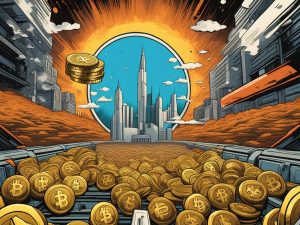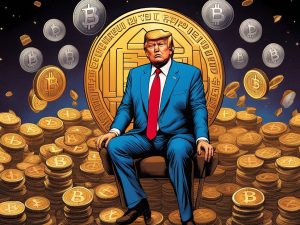The Clash of Crypto Titans: Solana Under the Microscope
Hey there! So, let’s dive into a very fiery discussion surrounding Solana, especially after the TOKEN2049 conference where none other than Edward Snowden had some pretty strong words about it. For those who may not know, Snowden is a major figure in privacy and tech discourse and his opinions carry some weight. If you’re thinking of investing in crypto, these discussions can really shape our perceptions and decisions.
Key Takeaways:
- Edward Snowden criticized Solana’s centralized nature compared to Bitcoin’s adversarial design.
- He warned about potential vulnerabilities of centralized systems to government control.
- The Solana community defended its architecture, promoting recent developments for decentralization.
- The broader question of how decentralization impacts investments in crypto networks.
Snowden’s remarks were quite significant, especially since he highlighted a core principle that a lot of us in crypto often overlook: adversarial thinking in the design of decentralized systems. What he was saying essentially boils down to this — if we’re going to build these amazing decentralized networks, they need to withstand not just casual scrutiny but also serious attacks from various fronts, including government regulation.
The Centralization Debate: What’s at Stake?
So, what did Snowden really bring to the table? He critiqued Solana for leaning towards centralization, which he believes could make it especially vulnerable to external control. It’s like he’s saying, “Sure, it’s fast and efficient, but at what cost?” This point hits home especially for someone like me, as someone who’s always championed the ethos of decentralization in all things crypto.
When you look at Bitcoin, its design is like this fortress. It’s built to endure attacks, which makes it a safer bet in uncertain regulatory environments. So you’re not just buying into a coin when you invest in Bitcoin; you’re also investing in a certain philosophy of resilience and independence. But with Solana, while it’s gaining traction with its fast transaction times, the fear is it could become a soft target. And nobody wants to see their hard-earned investment get held hostage by government intervention or worse.
The Solana Community’s Response
Now, it’s not all doom and gloom. The response from the Solana community has been equally passionate. Mert Mumtaz, one of the co-founders of Helius Labs, jumped in to defend Solana and directly challenged Snowden’s points. He asked critics to back their claims with solid data, which I think is fair. If you’re going to throw shade, you better have the receipts to show for it!
Mumtaz does bring up some interesting points about the network’s evolving client diversity and its architectural upgrades—like "frankendancer" and "Firedancer". These don’t just sound cool; they’re aimed at making Solana more decentralized. So, for investors, that’s a positive development! If you’re considering adding SOL to your portfolio, it’s worth keeping an eye on these enhancements.
Keeping It Real
Now, everything isn’t just black and white. Like, while Bitcoin and Ethereum might be the top dogs in decentralization, that doesn’t mean Solana is over there just twiddling its thumbs. It might be less decentralized, but as Mumtaz pointed out, being less so doesn’t inherently mean it’s going to collapse under the weight of control or hackery. Think of it as Usain Bolt vs. LeBron James: just because Usain can sprint faster doesn’t mean LeBron can’t throw down some real moves on the court!
The Bigger Picture
At this point, the broader landscape is something to mull over. Governments worldwide are indeed getting hyper-vigilant about cryptocurrencies. The last thing you want is to find yourself trapped in a project that can be easily compromised. So, think about your risk tolerance before jumping into something like Solana. It’s already trading at $143 and for many investors, that’s a hefty price tag for something that might not be as secure as Bitcoin.
Here’s what I’ve been doing lately: I keep a diverse portfolio and I like to mix in some different types of projects. Having a balance between riskier investments like Solana and more established ones like Bitcoin is a strategy I find useful. And make sure to keep up with updates; the crypto landscape moves fast, and being informed can be your best tool.
Reflecting on the Discussion
So where does that leave us, right? This whole debate underscores a vital conversation about decentralization, security, and the future of crypto. As an investor, the goal is to find that sweet spot between potential rewards and manageable risks.
Before we wrap up, I want to leave you with this thought: In an evolving digital age, how do you define the balance between innovation and security in your investment choices? It’s something worth pondering as we navigate this crazy and exciting crypto space together!





 By
By
 By
By
 By
By


 By
By